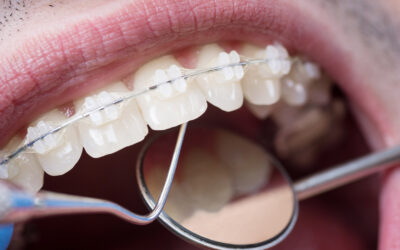Can I Get 6 Porcelain Veneers and Eventually 8 Later On?

Porcelain veneers are a popular and highly effective cosmetic dental solution that can dramatically improve the appearance of your teeth. They’re thin, custom-made shells that cover the front surface of teeth to correct issues such as staining, chipping, gaps, or misalignment. Many people considering veneers are curious about how many they can get and whether they can opt for a phased approach — such as starting with 6 veneers and then adding 8 more at a later time.
What Are Porcelain Veneers?
Porcelain veneers are a dental treatment used to improve the look of your smile. They are made from high-quality ceramic material that mimics the natural translucency of teeth. Each veneer is custom-designed to fit your teeth, covering imperfections such as:
- Staining or discoloration
- Chips and cracks
- Misalignment or uneven teeth
- Gaps between teeth
Porcelain veneers are popular because they provide a natural-looking result and are durable, resistant to staining, and long-lasting.
The Standard Approach: Getting All Veneers at Once
Typically, when patients opt for porcelain veneers, they choose to treat all their visible teeth at once — usually the top 6 to 8 or even up to 10 teeth, depending on the desired outcome. This is because veneers are designed to work harmoniously across the entire smile. If one or two teeth stand out due to mismatched shade, size, or shape, the final result may not look as natural.
Why are multiple veneers often done together?
- Aesthetic Harmony: When veneers are applied to multiple teeth at once, they can be customized to blend seamlessly with the natural teeth. A single veneer placed on one tooth might not match the surrounding teeth in terms of color or shape.
- Functional Balance: The bite and alignment of your teeth need to be considered when placing veneers. If you only do a few teeth at a time, your bite might not be as balanced as it would be if all the veneers were placed together.
Can I Get 6 Porcelain Veneers Now and Add More Later?
While getting 6 porcelain veneers initially and then adding 8 more later is technically possible, there are a few important factors to consider before going this route. Let’s break down some key points:
1. Aesthetic Considerations
One of the main challenges of adding veneers in two phases is ensuring that the final result will look cohesive. When veneers are applied to just part of your smile, there’s a risk that the appearance of the smile may look incomplete or mismatched initially. Here’s why:
- Shade Matching: Porcelain veneers are color-matched to your natural teeth, and over time, natural teeth can change color due to factors like aging, diet, and oral hygiene habits. If you wait too long before adding additional veneers, the shade of the new veneers might not match the ones that were placed earlier.
- Shape and Size: The overall shape, size, and alignment of your veneers need to be consistent across your smile. If you add veneers later on, you’ll need to ensure that the new veneers blend seamlessly with the original ones, which can sometimes be challenging if the first set wasn’t designed with future additions in mind.
2. Dental Structure and Preparation
Porcelain veneers require minimal but precise preparation of your natural teeth. This may involve removing a small amount of enamel from the teeth to ensure a secure fit. If you decide to add veneers in two phases, you’ll need to carefully consider the following:
- Consistency in Preparation: The amount of enamel removed during the initial procedure must be consistent with the needs of the later veneer placement. Your dentist will need to plan ahead to ensure that your remaining teeth can accommodate future veneers without compromising the integrity or strength of the teeth.
- Long-Term Planning: In some cases, if you only get a partial set of veneers initially, you might need to make slight adjustments later to ensure everything lines up correctly. This is particularly true for people who may have more complex bite or alignment issues.
3. Cost and Budget
Getting veneers can be an investment, with each veneer costing several hundred to a few thousand dollars, depending on where you live and the experience of your dentist. If you’re planning to get only 6 veneers now and add 8 more later, you may have to plan for two separate treatment expenses. Keep in mind that adding veneers incrementally might also affect any discount you might receive for a larger, all-at-once treatment.
4. Time Considerations
Porcelain veneers take time to design, fabricate, and place. During the process, you may need to wear temporary veneers, and you may also experience some discomfort or sensitivity. If you plan to get veneers in two stages, you’ll need to schedule additional visits to your dentist for the second phase, and this may prolong the overall treatment timeline. Additionally, you may have to live with an incomplete smile for a period of time.
5. Durability and Longevity
Porcelain veneers are designed to last for many years — often between 10 and 15 years, sometimes even longer with proper care. However, if you decide to add more veneers later, it’s important to note that the first set of veneers may wear down over time. If you’re planning to eventually complete your smile, it’s important to consider that the older veneers may need to be adjusted or replaced in the future to match the new ones in terms of color, size, and shape.
6. Functional Impact
In terms of function, a partial set of veneers might not provide the full support and bite alignment that a complete set would. The pressure on your teeth, jaw, and bite might change when only some of your teeth are treated, potentially leading to discomfort or even damage over time. When planning for veneers in two stages, your dentist will likely perform a thorough assessment of your bite and overall dental health to avoid any functional issues.
Consult with Your Dentist
If you’re considering getting 6 porcelain veneers now and adding 8 more later, the most important step is to consult with a highly skilled cosmetic dentist who has experience in designing veneers and understands the potential challenges of a phased approach. Your dentist will be able to:
- Assess the overall health and appearance of your teeth
- Discuss the ideal number of veneers for your smile
- Plan the procedure to ensure the best aesthetic and functional results
- Help you understand the potential costs, timing, and long-term considerations of adding veneers in phases
Conclusion
While it is technically possible to get 6 porcelain veneers and eventually add 8 more, it requires careful planning and consideration. The key challenges are ensuring aesthetic harmony, functional balance, and the long-term durability of the veneers. A phased approach can work for some people, but it’s important to have a clear plan in place and work with a skilled cosmetic dentist to ensure that the final result is both beautiful and functional.



